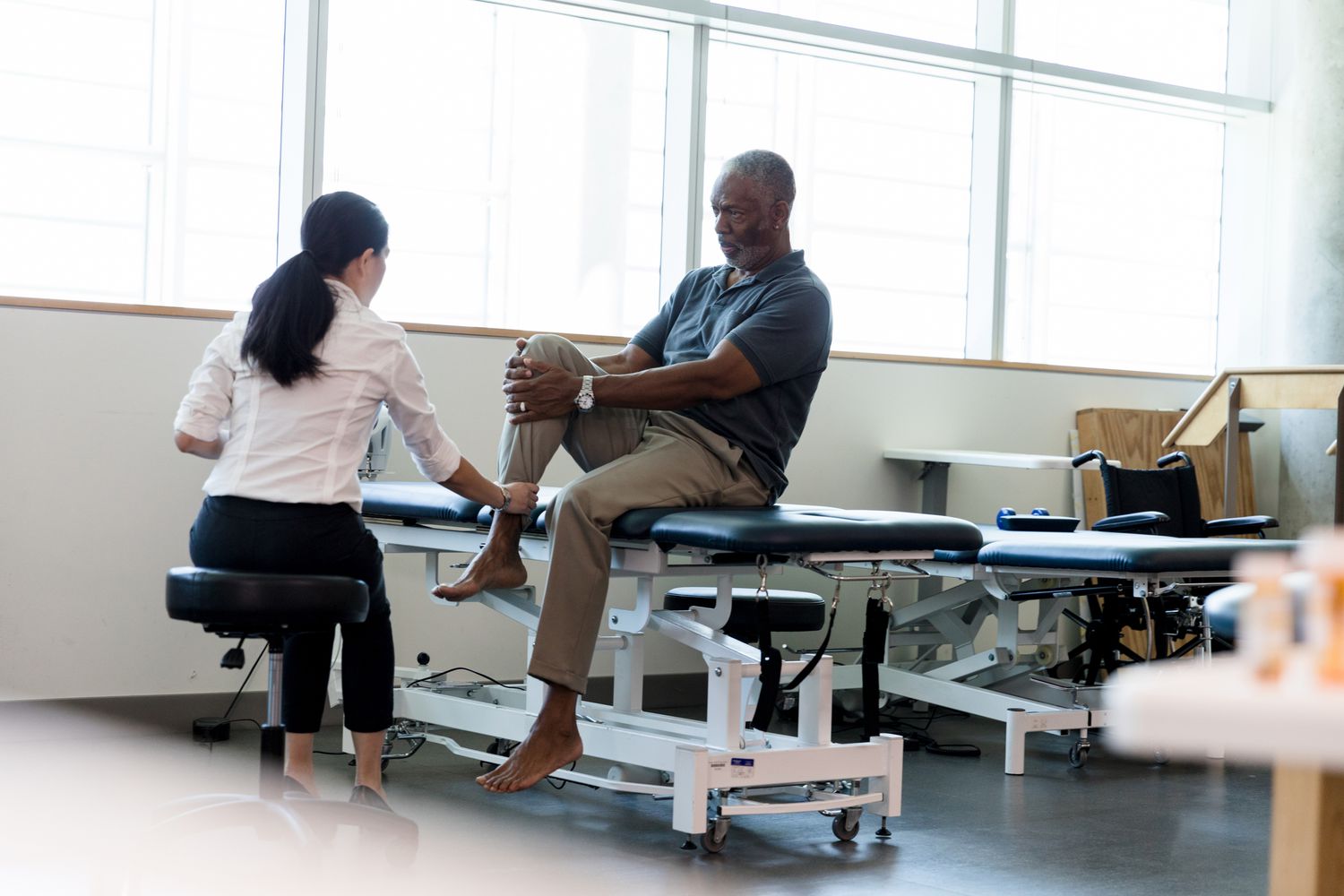Black Americans at Greater Risk for Peripheral Artery Disease, Yet Many Unaware

A recent survey has revealed that the majority of Americans are not familiar with peripheral artery disease (PAD), a cardiovascular disease related to blocked blood vessels in the legs.
PAD affects blood circulation from the heart to the limbs and can cause severe medical complications, including stroke, heart attacks, leg amputation, and in some cases, death.
The research involved a survey of 2,000 Americans aimed at assessing their understanding of PAD symptoms, potential risk factors, and the frequency of discussions about PAD between patients and doctors.
Despite the widespread nature of this disease, affecting up to 12 million Americans, nearly 70% of survey participants admitted to having little knowledge about PAD.
Dr. Kumar Madassery, director of the Peripheral Vascular Intervention & CLI Program at the Rush University Medical Center, expressed surprise at the lack of public awareness about PAD. Without urgent action to increase awareness, the situation could negatively impact both public health and the healthcare system, he warned.
Muscles in the legs can become deprived of necessary blood and oxygen due to a condition known as atherosclerosis, the main cause of PAD. This condition results from the accumulation of fat and cholesterol in the arteries. High blood pressure, smoking or tobacco use, and diabetes are the primary risk factors for PAD, which particularly affects men over 50.
Anahita Dua, MD, MBA, a vascular surgeon and co-director of the Peripheral Artery Disease Center and Limb Evaluation and Preservation Program at Massachusetts General Hospital, found it astounding that PAD is not better known, given its association with diabetes.
The survey's respondents included 500 Black Americans and 500 Hispanic Americans, who are more prone to PAD and related complications. Black Americans are twice as likely to contract PAD compared to their white counterparts. For Hispanic Americans, the PAD diagnosis can be particularly aggressive, with a high risk of amputation and death within the first year.
Despite their high risk profiles, most Black and Hispanic respondents did not perceive themselves to be at risk for PAD. Dr. Foluso Fakorede revealed that most respondents from these communities had not been consulted by their doctors about PAD.
Dr. Dua added that Native Americans and South Asians also have high PAD rates, further emphasizing the need for outreach in minority communities.
The initial symptoms of PAD, such as leg pain, discomfort, cramping, or achy feet usually occur during physical activity and subside while at rest. This often leads patients to dismiss their symptoms as normal age-related pains. Further complicating diagnosis, experts warn that many people with PAD may not show symptoms until later stages and recommend immediate PAD screening if you have risk factors such as diabetes, high blood pressure, or smoking.
Dr. Fakorede urged patients to discuss potential PAD symptoms or risk factors with their doctors immediately, regardless of the healthcare setting.
Reaching out to a healthcare provider can quickly help you get a diagnosis. Healthcare providers test for PAD using an ankle-brachial index (ABI) test. This test is “a simple, low cost and non-invasive test that can help determine if a patient has PAD. This is simply a test comparing blood pressure at the arm and the ankle,” said Madassery.
As the disease worsens, symptoms become more severe. Symptoms of advanced PAD include:
If left untreated, severe cases of PAD can result in a leg amputation and, along with it, high mortality rates. According to Dua, 50% of patients who have to undergo a leg amputation due to complications of PAD pass away within the first two years after amputation.
Additionally, Dua explained that amputations can severely impact patients’ mental health, citing numerous studies about the increased rates of depression in patients who have had an amputation. “The physical and mental toll this takes on patients and family members is immense,” added Madassery.
Treatment includes addressing the underlying conditions that increase your risk of developing PAD. If you are a smoker and are diagnosed with PAD, quitting smoking can reduce the risk of your disease progressing. Additionally, managing blood pressure and diabetes is key for people with PAD to improve their condition. Some of the ways PAD is treated include:
It is important to note that any medications prescribed to manage your blood pressure and diabetes should be taken as indicated by your healthcare provider.
In some severe cases, surgery might be required. These surgical procedures can include opening a blocked blood vessel or rerouting the blood supply around a blocked artery to provide blood flow to the legs.
The PAD survey findings highlight the large gap in public awareness of PAD as a leading cardiovascular disease. This lack of awareness is more pronounced when it comes to Black and Hispanic communities, which are at a higher risk.
There is a need for patients, physicians, insurance providers, and government entities to work together to improve PAD awareness and patient outreach.
“I think all of us in healthcare have done a poor job of educating patients, providers, and governing bodies as to the importance of primary PAD prevention, detection, and early conservative management,” said Madassery. “I strongly believe with everyone involved in healthcare working together for the common goal of reducing this preventable disease burden, we can achieve a significant benefit to not only patients themselves but also to the entire healthcare system.”
“Medical care in this country has advanced in multiple areas over the last 50 years, but we have not with it advanced our education and engagement with our patients so that they know what to be looking for,” said Dua.
The PAD Pulse Consumer Survey hopes to be a step in the right direction to improve PAD awareness in the public eye and improve patient outcomes.
“It’s important for patients to be engaged with this information so they can help us take care of their health,” said Dua, “and we can make sure they live the happiest and healthiest lives they can.”




